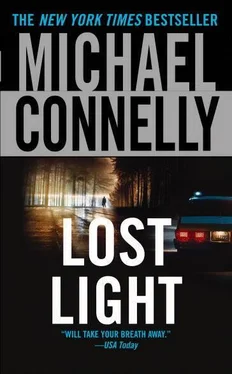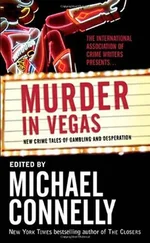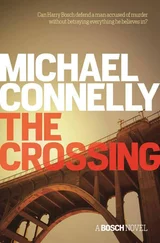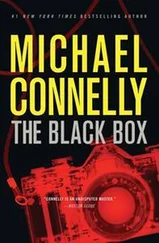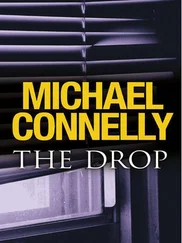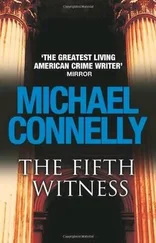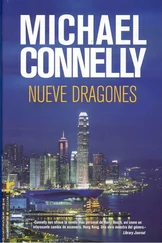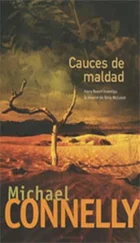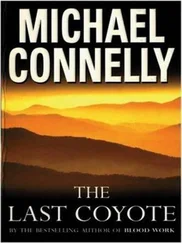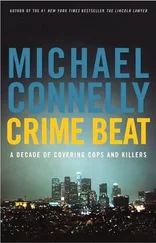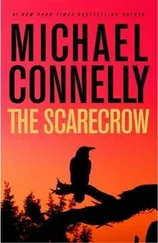“Can I see that?”
She closed it and handed it across the desk to me.
“You can have it. Like I said, I don’t think I’ll ever be seeing Linus again. He has no time for me. He did what he said he was going to do and that’s that.”
I looked up from the magazine to her.
“What do you mean? What did he tell you he was going to do?”
“When I saw him in the hospital. He told me the bank owed him a lot of money for getting shot in the… uh, you know. He said he was going to get it, quit his job and open up a bar. He said he wouldn’t make the mistakes his dad made.”
“His dad?”
“I didn’t know what that meant. I didn’t ask. But for some reason, opening that bar was Linus’s life ambition. To be king of the night, I guess. Well, he got there.”
Her voice had a mixture of longing and jealousy in it. It didn’t work well with her and I wished I could tell her what I thought of her hero. But I didn’t. I didn’t have everything I needed yet.
Thinking I had taken the interview about as far as I could, I stood up and held up the magazine.
“Thanks for your time. Are you sure you don’t mind me taking this?”
She waved me off.
“No, go ahead. I’ve looked at it enough. One of these nights I ought to just put on my black jeans and black T-shirt and go on down and see if I can catch Linus for a minute. We could talk about the good old days but he probably doesn’t want to hear about them.”
“Nobody does, Jocelyn. Because the old days weren’t that good.”
I got up. I wanted to offer her some words of encouragement. I wanted to tell her not to be jealous, that what she had and what she’d accomplished were things to be proud of. But the sheriff’s helicopter took off and banked across the street and over the bank. The place shook like an earthquake and took my words with it. I left Jocelyn Jones sitting there thinking about the other side of the tracks.
The magazine had been published seven months earlier. The story on Linus Simonson and his partners was not a cover story but it was hyped on the cover with a line that said, “Hollywood’s After Hours Entrepreneurs.” The story was hooked to the impending opening of a sixth club in the foursome’s lineup of all-star late-night establishments. The article referred to Simonson as the king of the night crawlers, the one who parlayed the whole empire out of one hole-in-the-wall bar he had bought with a legal settlement. He had taken that first club, in an alley off of Hollywood and Cahuenga, renovated it, cut the lighting in half and brought in female bartenders who were prized more for their looks and tattoos than their skills at mixing drinks and adding bar tabs. He played the music loud, charged a $20 cover and didn’t let anyone in wearing a tie or a white shirt. The club had no name on the wall outside and no listing in the phone book. A flashing neon blue arrow over the front door was the only indication of a commercial venture. But soon the arrow was no longer needed and was removed because there was always a line of clubbers stretching from the door down the alley.
The article stated that Linus-he was referred to by first name through most of the article-then partnered up with three buddies from his days at Beverly Hills High School and started opening new clubs at a rate of one every six months. The entrepreneurs primarily followed the pattern that worked with the first club. Buy a rundown establishment, renovate and reopen, put the word into the pipeline and wait for it to spread through the ranks of the Hollywood cool. After the nameless bar, the lounges the group opened tended in style and name to follow a literary or musical theme.
The second bar the group bought, closed and then reopened was Nat’s Day of the Locusts, a nod to Nathanael West and his classic Hollywood novel. It wasn’t their name. The place had been known as simply Nat’s for decades and most patrons probably believed it was named for Nat King Cole. Either way the name was cool and the group kept it.
Nat’s was also the same place Dorsey and Cross had gotten shot up in. The article reported that the murder had acted to depress the sales price of the place. In fact, it was a steal. But once the bar was reopened-without a name change-and marketed to the night crawlers, the place’s history only added to its mystique. It was another immediate and huge success for the high school pals who called their burgeoning company Four Kings Incorporated.
For a long time in my life I did not believe in coincidence. I now know better. But there are coincidences and there are coincidences. Kiz Rider coming to my house and laying the high jingo on me as Art Pepper was playing it-that was coincidence. But as I sat in the Mercedes and read the magazine article, I wasn’t accepting the happenstance of Linus Simonson buying the bar in which two detectives who investigated the heist of $2 million he counted and prepared for shipment were shot. I didn’t think it was coincidence for a moment. I thought it was pure arrogance.
Besides the nameless bar and Nat’s, the foursome also opened places called Kings’ Crossing, Chet’s and Cozy’s Last Stand, named, according to the article, after a friend who had disappeared. The place which had occasioned the magazine story and was due to open was to be called Doghouse Reilly’s, after an alias used by private eye Philip Marlowe in a Raymond Chandler novel.
The story didn’t delve deeply into the financing behind the four-man operation. It was more interested in the glitz than the underpinnings of the supposed success story. It was taken and reported as a given that the first establishments supported the group’s expansion in a continuing cycle. Profits from the first bar financed the second and so on.
But the picture wasn’t purely positive. The article’s writer ended the story with a suggestion that the four kings might become victims of their own success. The theory espoused was that the population of black-clad night crawlers was finite in Hollywood, and that opening and operating six lounges did not convincingly expand the client base. It only spread it out. The article noted that there were also many pretenders to the throne, a raft of inferior, uncool bars and lounges that had opened in recent years.
The story ended by noting that on a recent Friday night at midnight, there was no line of night crawlers waiting to get into the nameless club. It cynically suggested that it might be time to put up the blue arrow again.
I dropped the magazine into the binder and sat there thinking about things. I had the sense that things were coming together. I felt anxious because I knew instinctively I was close. I didn’t have all the answers but experience told me that they would come. What I had was the direction. It had been more than four years since I had looked down on Angella Benton’s body and I finally had a solid suspect.
I opened the center console and got out the cell phone. I figured there would be no harm in calling my own home number. I checked messages and found I had two. The first was from Janis Langwiser. It was short and sweet.
“It’s me. Call me but use all precautions.”
I knew that meant a pay phone. The next message was from Roy Lindell. He also followed the standard of brevity.
“All right, asshole, I’ve got something for you. Call me.”
I looked around. I was parked in front of a post office on San Vicente. My meter was up and I was out of change for both the parking and the calls I needed to make. But I figured there would be a phone inside the post office and a machine for getting change to buy stamps from other machines. I got out and went in.
The main post office was closed but in an outer room that was open after hours I found the machine and pay phone I was looking for. I called Langwiser first because I figured that I had already moved the investigation past the information I had asked Lindell to get for me.
Читать дальше
